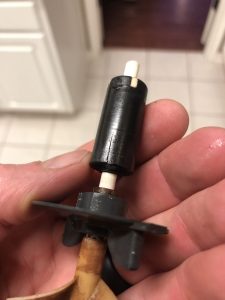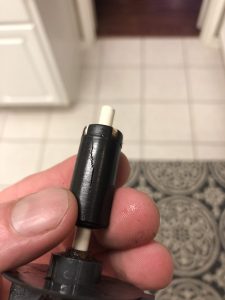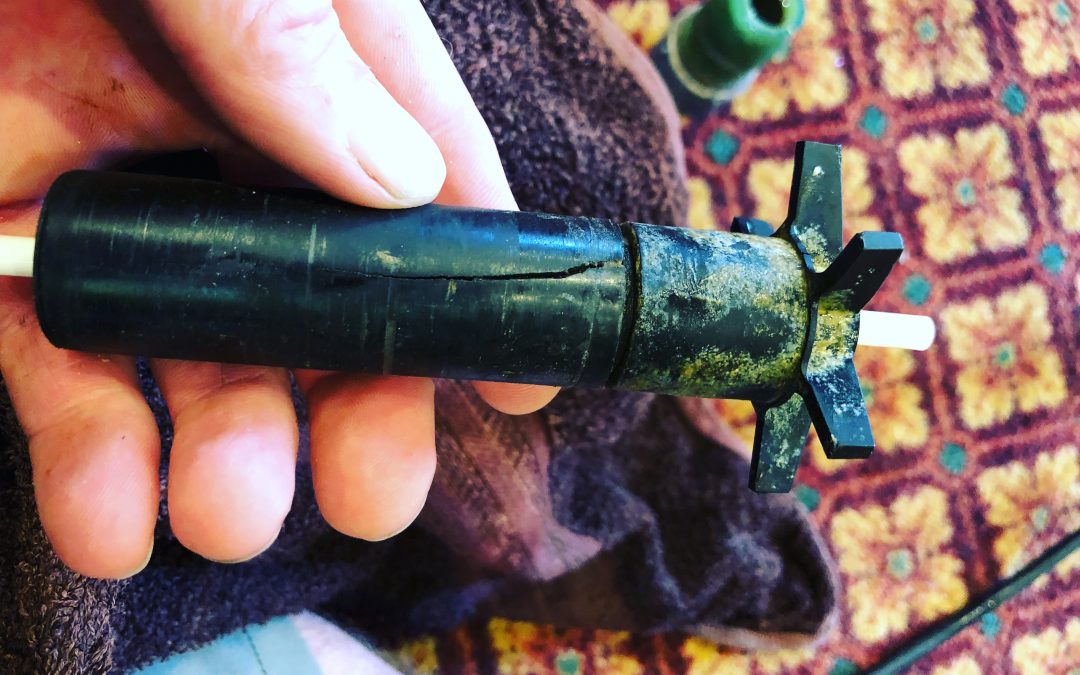Maintenance of your saltwater aquarium equipment is just as important as the time you spend fretting over water quality. I suspect that the average aquarist might never disassemble and clean water pumps on their system, which is a big mistake. It is my opinion that any reef hobbyist should be as familiar as possible with their equipment; disassemble it and get to know it. This way you might be able to fix it yourself or at least trouble shoot it at home should something stop working. In my experience, most problems with water pumps come from ruined impellers, not the pump motor itself.
A pump’s impeller (propeller for most modern circulation pumps) typically looks like a cylindrical magnet with a ceramic (sometimes other materials) shaft down the middle and rubber grommets on either end to hold it in place inside the pump. For pumps that are made to transfer water from point A to point B, as opposed to in-tank circulation pumps or skimmer needle wheel impellers, the impeller uses several paddle like arms to push water through the volute (on smaller or cheaper pumps) or curved vanes enclosed by two shroud plates. Higher quality pumps will use the latter.
An example of smaller impellers using “paddle like arms” to move water can be found on brands like Cobalt MJ series, Supreme Mag Drive, and Sicce, among others. Just like anything else, some are made better than others but I’ll let you be the judge of that.
Larger pumps use the aforementioned curved vanes inside two shroud plates because it is actually more efficient and better balanced. Check out this cool video below to help visualize what I am feebly trying to describe.
What is a volute you ask? That is the casing bolted onto the motor of the pump that receives the fluid being pumped, leading to the discharge (also part of the volute) where the liquid is ejected from. Generally speaking, if you have taken apart a few pumps and examined them, the concepts are basically all the same. Cleaning and examining a pump’s impeller and volute at least a couple times a year (more often for protein skimmer pumps and circulation pumps) is a great way to extend their life and function.
A huge majority of modern skimmer pumps use needle wheel impellers to chop up incoming air into a frothy air/water mixture. These needle wheel impellers have small holes and pins built into them that get tiny snail shells, algae, bacterial slime and other objects stuck in them, greatly reducing their effectiveness. I think you should clean needle wheel impellers at least once every 2-3 months. If you consistently find them to be clean, just extend that out a few more months. If you find them to be dirty and clogged after 2-3 months, it would be wise to examine the layout of your filtration to make sure that the water coming into your sump is getting some sort of pre-mechanical filtration such as filter socks, roller mats, or foam before aquarium water gets to your skimmer in order to capture all this so it doesn’t end up clogging the needle wheel plate.
Since main drive pumps and circulation pumps are less complicated than needle wheel impellers (less nooks and crannies to get junk stuck in and clogged), the maintenance of them is more straightforward. You’ll want to clean the bacterial slime off of the magnet and inside the impeller well of the pump. Honestly I am not sure that “impeller well” is a technical term (for where the impeller sits inside the pump) but it is the name that came to me and I think it sounds legit enough. Make a comment down below if you know what it is actually called.
A word of caution as some impellers may have little plastic washers on them and it is important to know how they are situated on the shaft and to account for them (make sure they are still there) before reassembly. You don’t really need to break an impeller down that far but just in case, see if yours has one or not so you don’t accidentally lose it down the sink drain. If your impeller does have these washers, they are usually situated between the rubber grommets at the ends of the impeller shaft and the magnet itself.
You’ll want to use an old toothbrush to scrub, a toothpick or paper clip to poke things out of tight spots and to clean out needle wheel impeller holes, and white vinegar if you are seeing a lot of corralline algae or scale on or in the pump. Just soak it in vinegar for a bit, then clean it up.
One of the main reasons I wrote this post is because the frequency I see cheaper impellers go bad. I think people might be confused why the pump is bad and throw away the whole thing when all they need to do is get a new impeller. I’d like to alternatively suggest to do what I just said not to do. Throw it all away and just get a better brand that uses more appropriate magnets for their impellers. Some brands use a magnet that is jacketed in plastic because the magnet itself is not friendly with saltwater…corrosion. That’s not bad in itself but over time, water usually leaks into the jacket and corrodes the magnet within. You’ll find the plastic jacket malformed upon close inspection and sometimes even cracks in the jacket. This causes the pump to lock up because the impeller has expanded inside the pump well and can’t move anymore. I’ve had to remove impellers from pumps with a channel lock before. I’ve even just thrown a pump away because the impeller just basically fused itself inside the pump well.
This is one of the main reasons I’m throwing this info out there. It’s better to catch this in action before it becomes a huge problem. Sometimes it degrades slowly enough that you can catch it while the pump is still functioning and get a new impeller ordered in time. That is, if you are checking it from time to time.
In fact, while writing this post, I tried to push an old circulation pump I had laying around into service for quarantining a large Achilles tang. It worked for one hour and then locked up. After taking it apart…yep, exactly what I am writing about.


I hope this information helps you keep your system functioning much better and that you learned something here. Thank you so much for reading!


Recent Comments